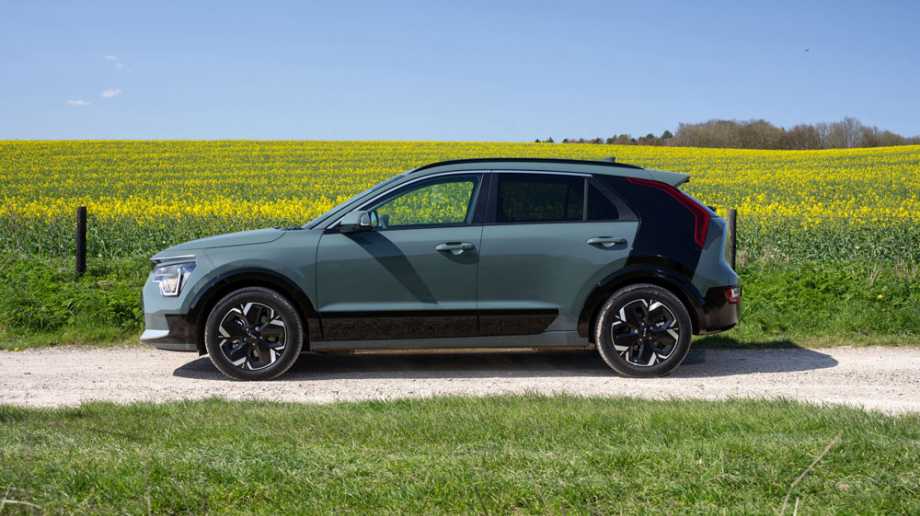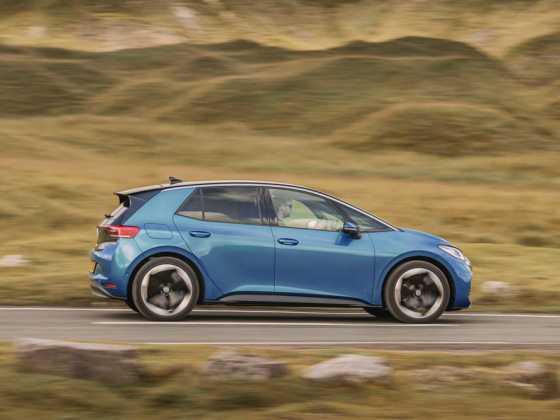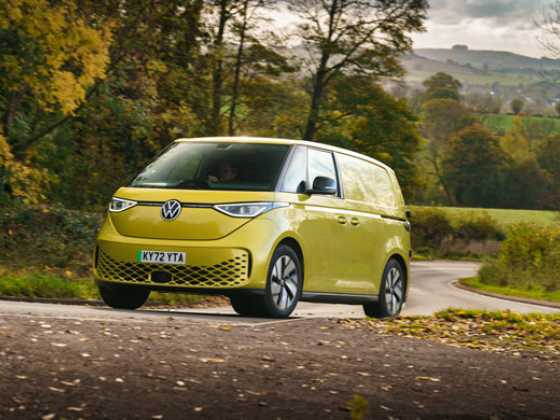Kia Niro EV

The Niro is Kia’s second most popular car, and its original hybrid, plug-in hybrid and all-electric model format made the first generation popular and appealing to fleet drivers. Richard Gooding finds that Kia has wisely built on the strengths of that original car to create a new version, updated with new looks and technology
What is it?
Launched in 2016, it didn’t take long for the first-generation Kia Niro to become a success. Sold in hybrid, plug-in hybrid and all-electric guises, the model became a consistent best-seller in the UK. The Niro is Kia’s second most popular model in this country, and has recently passed the 100,000 cumulative UK sales mark. The second-generation Niro was introduced in July 2022, and repeated the electrified trio format of its predecessor.
Bold styling marks out the newcomer, and there is more tech on-board, too. The practicality of the old car is also carried over, along with its long range capability. One of the biggest changes the all-electric Niro has over the car it replaces is its name – to bring it inline with Kia’s wave of new electric cars that will have ‘EV’ in their names, the e-Niro title is dropped and replaced by the more in-keeping Niro EV.
What range does it have?
Kia has kept the technical specification of the new Niro EV simple. While the old car was available with both 39kWh and 64kWh battery packs, all versions of the Niro EV have a 64.8kWh ‘long range’ lithium-ion battery. This gives an official WLTP combined cycle driving range of up to 285 miles on a single charge.
How long does it take to charge?
The Niro EV has a 11kW on-board charger. Maximum rapid charging DC capability tops out at 80kW, which is a little down on some rivals. However, a 10-80 per cent battery refill should still only take around 45 minutes when connected to a 100kW DC rapid charger. On higher-spec ‘3’ and ‘4’ trims, the Niro EV’s thermal management and battery system uses navigation-based battery conditioning to pre-heat the battery when temperatures are low, if a fast-charging point is selected as the destination. At home, a 7.2kW wallbox will charge the car’s battery fully in just under 10 hours, while a 22kW AC connection will reduce that by three hours.
A smart regenerative braking system allows for fine-tuning of both the driving and charging experiences. The five levels are accessed in the most intuitive way, adjusted by steering wheel paddles. The most severe level has a near-one-pedal driving feature, which makes piloting the car in urban areas easy.
Similarly to Kia’s flagship EV6 – the Niro EV has a V2L (Vehicle-To-Load) connection. Fitted to ‘3’ and ‘4’ model trims, this means you can charge external electrical devices from the car’s unused battery charge by way of bi-directional charge technology.
How does it drive?
From the outside, the Niro EV has much sharper and design-led looks than the old e-Niro, and makes a striking impression before you’ve even stepped inside. Inspired by Kia’s HabaNiro concept car of 2019, the Niro EV is marked out from other new Niros by a two-tone closed front grille as well as unique side cladding options. Making more of a statement, the C-pillar can also be picked out in a contrasting finish on high-spec models, and also helps with airflow, standing slightly proud of the body at the rear to channel air through it for enhanced aerodynamics.
Inside, sharper lines, high quality finishes and a focus on digitisation create a cabin that’s very different to the old model. The dashboard wraps around the front of the car, with twin 10.25-inch colour displays that lend a high-tech feel. The haptic button panel, borrowed from the larger EV6, controls the navigation and infotainment functions as well as the heating, and is a clever use of design. The drive controller sits atop the centre console.
Practicality remains a key strength. Built on the third generation of Kia’s K-platform, the new Niro EV is 65mm longer, 20mm wider, 10mm taller than the e-Niro, with a 20mm longer – 2,720mm – wheelbase. With the rear seats up, there is 475 litres of luggage space, and when folded, up to 1,392 litres of carrying capacity can be liberated.
This family focus translates to the way the Niro EV drives, too. Comfort is prioritised over sportiness, but this suits the car well. Niros have never been about out and out performance, and the new car does little to change that, sharing the same 201bhp power output as the older car. With 188lb ft of torque, it picks up pace well enough and the Niro EV is a quiet and comfortable cruiser, with little noise entering the cabin. The steering has a light and direct feel, and the Niro EV’s relaxed drive and focus on comfort is appealing.
What does it cost?
As with the technical specification, Kia has simplified the choice of Niro EV models. Three grades – ‘2’, ‘3’, and ‘4’ – are available, similar to the old model. Entry level ‘2’ trim starts at £37,295 and comes with 17-inch alloy wheels, Android Auto and Apple CarPlay, an integrated 10.25-inch TFT LCD driver’s display with 10.25-inch touchscreen infotainment system with navigation, rear parking sensors, smart cruise control, and a towing pack.
Move up to the £39,545 Niro EV ‘3’, and you’ll gain front parking sensors, heated front seats and steering wheel, lumbar support on the driver’s seat, rear privacy glass, vegan leather and cloth upholstery as well as a V2L connection.
The £42,295 ‘4’ adds a head-up display, a power opening tailgate, a remote smart parking system, a one-touch tilt and slide sunroof and full vegan leather upholstery. The ‘4’ can also be specified with a contrasting black or grey C-pillar to make it that little bit more distinctive. It’s also worth noting that the ‘3’ and ‘4’ trims are available with a heat pump to aid efficiency, priced at £40,445 and £43,195 respectively.
How much does it cost to tax?
In line with all new electric cars, the Niro EV is exempt from VED charges in both its first and following years of registration. Similarly, for fleet drivers, Kia’s compact electric crossover attracts a two per cent Benefit In Kind (BIK) value under 2023-2024 company car tax rates. This is the same for 2024-2025.
Why does my fleet need one?
Expected to take up to 60 per cent of the Niro registrations pie, the new Niro EV does a thorough job of updating a tried, tested and very successful recipe. Taking the best parts of the old car and encasing them in a stylish and distinctive wrapping was the right move. When compared to some smaller electric cars that nip at the entry level Niro EV’s price, the Kia offers a lot more practicality, style and technology. Fleet drivers should find ‘3’ grade trim has all the equipment they could want, nicely positioned in the middle of the other two models.
Don’t underestimate the popularity of the Niro to both Kia and the wider EV market as a whole. Up to the end of June 2022, around 78,000 examples of the Niro have found homes in the UK since its arrival in 2016, with significant growth in registrations every year. In 2021 and in the first half of 2022, the e-Niro was the second most popular electric vehicle in the UK. The Niro EV should only continue this success, thanks to its blend of value, long range capability and its new found sense of style.









